.
.
The Hireling Shepherd
painting by William Holman Hunt
This comely wench was Emma Watkins, she
Who sat for Hunt in eighteen fifty-two.
Too unaffected she, she never knew
What lay beyond the brink, beyond the lee
Of innocence. Nor could she ever see
The fame at second hand that would accrue
Through all who gazed upon her face anew
As through Hunt’s perfect eye so too do we.
And hers a kind of immortality,
Her face from fate’s obscurity set free,
And better known, though dead is she, so too
Is every ewe and every tree we see
More living still than Hunt, known chiefly through
His art and such as Emma’s buxom view.
.
.
.
Mariana
painting by Sir John Everett Millais
Aweary she, of waiting constantly,
Of waiting long for one who never comes,
Her lamentations piteous to see.
But he will not return and she succumbs
To languor and she wishes she were dead.
“Five long and lonely years I’ve lingered here,
Inside this moated grange,” worn out, she said,
“He won’t return, he’ll not come back I fear.”
Look closely at her window in the grange:
That casement can’t be opened from within.
The room unswept, the sycamore, how strange,
How did it shed so many leaves therein?
Though leaves may enter none can leave the room,
Nor broom can sweep leaves from a sealèd tomb.
.
.
.
Proserpine
painting by Dante Gabriel Rossetti
Empress of Hades and a goddess she,
Unwilling bride to Pluto here she stands,
And in the left of her beseeching hands
She bears the fruit she’d taken from the tree.
Her mother Ceres’ importunity
Led her to make of Jupiter demands
That Pluto should return her to the lands
Of Terra Mater and to set her free.
If only she had known a single seed
Of that forbidden fruit would sadly lead
To this dark cloister, looking furtively
Through Hades’ window at the sullen light,
Nor quite enough to turn night here to day
Nor dark enough to let her slip away.
.
.
Peter Hartley is a retired painting restorer. He was born in Liverpool and lives in Manchester, UK.




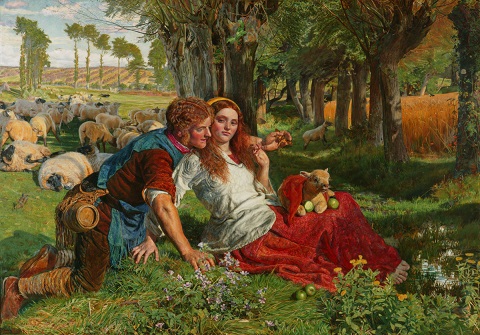
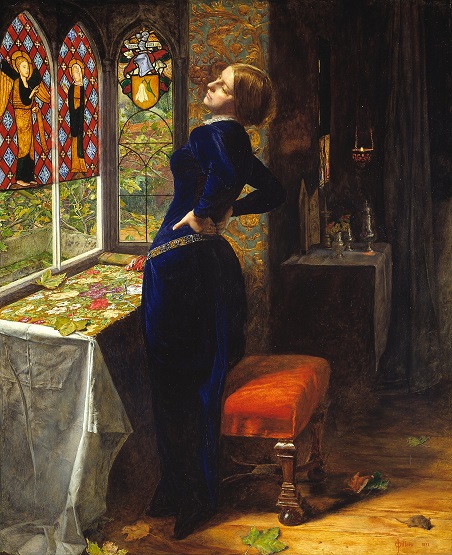
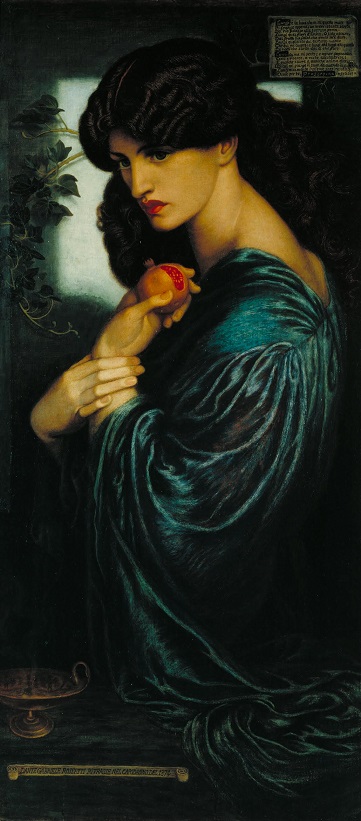
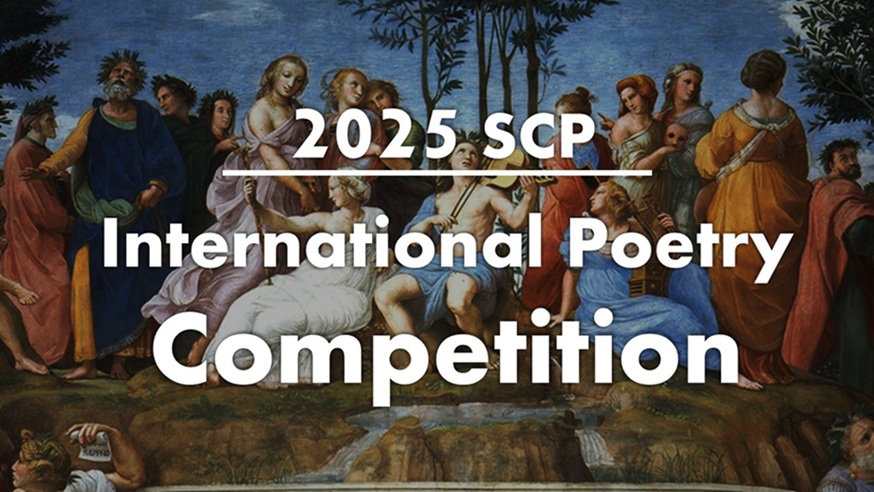

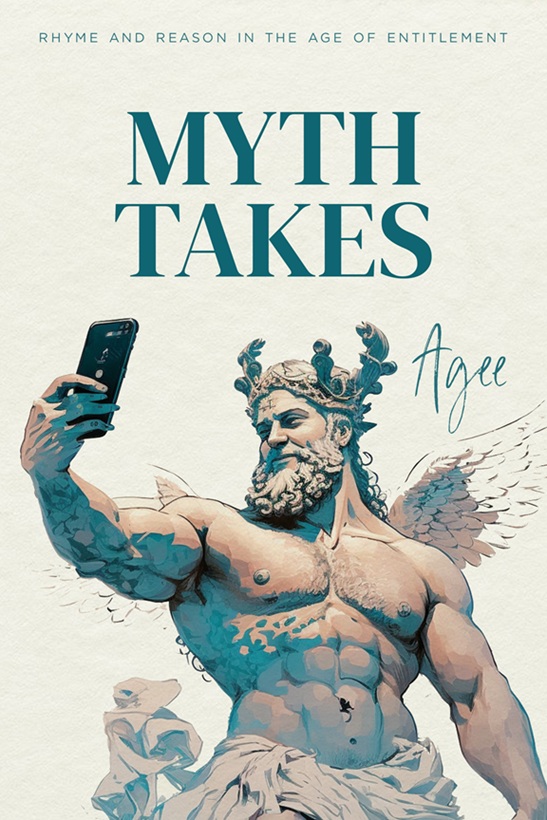
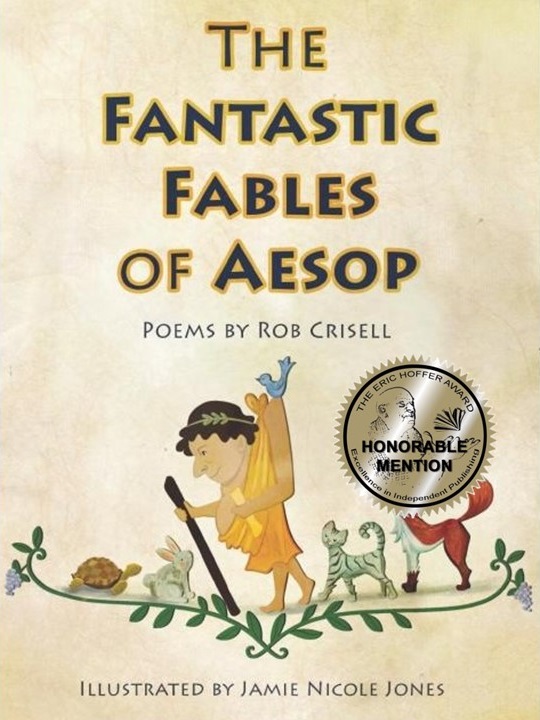
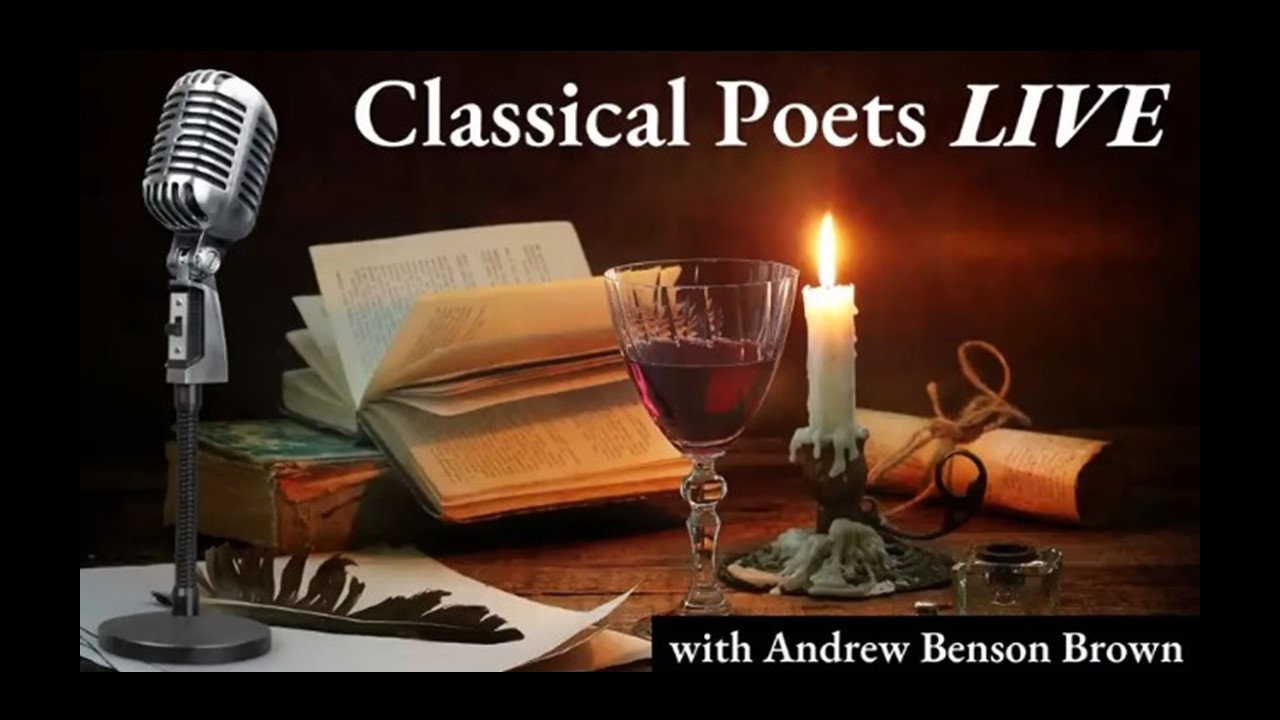

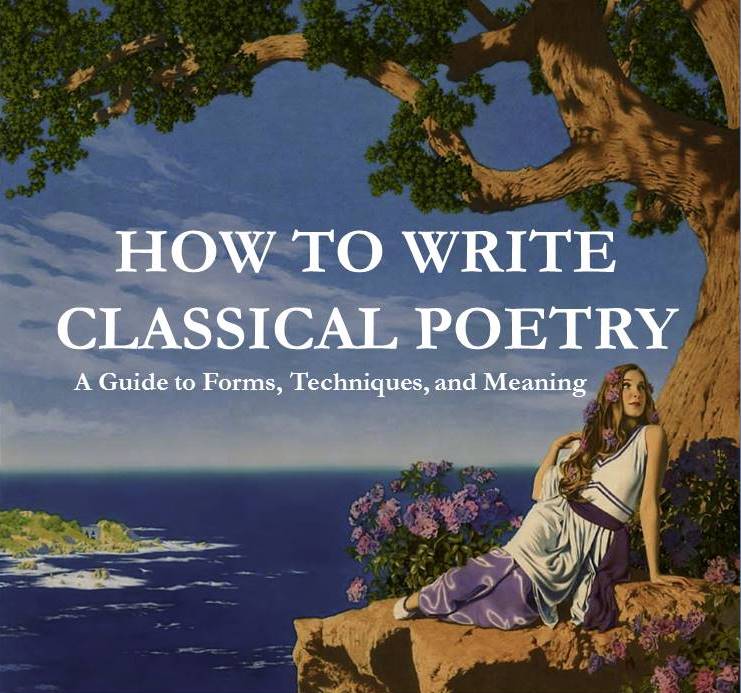




Dear Peter,
These are wonderful. I’m a painter myself, and I’ve studied and adored the Pre-Raphaelites for about 30 years now.
Every so often, poems come along that I wish I’d written, and these all fall into that category. Bravo!
Yours truly,
Paul Erlandson
PS – I should like to talk to you about painting sometime.
Paul – thank you for the extremely kind comment, and it is a compliment indeed that you had written these poems yourself. In my working life I very rarely had to carry out any major restoration work on a Pre-Raphaelite work because they were so universally well painted with sound materials. Compare the life expectancy of one of these gems, say, with that of a Chris Ofili mountain of elephant dung or a (by now) stinking unmade bed!
I’m very impressed, Peter. I’ve only once described a painting in poetry – it’s a hard task. You make me want to try again.
Funnily enough, I caught a bit of a Percy Jackson film today as I was looking for something to watch and it was a scene with Proserpine and Hades (the latter played by Steve Coogan).
Thanks for three fabulous, illustrated reads.
Paul- thank you for the comment on these three little poems and I do hope you will try to paint a picture of a picture again in words. After all there is limitless scope isn’t there? I have Evan to thank, of course, for digging these paintings out, and for the quality of the reproduction. Paintings by the Pre-Raphaelites in the typical “hard-edged” style of Millais and Holman Hunt should reflect the light from the ground layer beneath the paint through the paint layer and out again like stained glass, and these reproductions do just that.
Hi Paul. Marvelous paintings, marvelous poems.
The layout of the page is also an enhancement of both images and words.
There’s a mystery you pose in Mariana.
“Look closely at her window in the grange:
That casement can’t be opened from within.
The room unswept, the sycamore, how strange,
How did it shed so many leaves therein?
Though leaves may enter none can leave the room,
Nor broom can sweep leaves from a sealèd tomb.”
My prosaic side butted in and I assumed there is a door somewhere in the room and so she could pop out for a stroll round the garden if she wanted.
There may be a stopper on this in Shakespeare’s play. You mention five years. Maybe this indicates there is more in the play than your or Tennyson’s poems.
On the pretext that she could walk out of the building, I wrote this:
Each time outside she brought indoors a leaf.
Each time another one and then one more
Until she scattered them, frustrating sheaf,
Failed Harvest labels from the sycamore.
Each useless tag addressed from places lost,
Their brittle signs obscured or overcast,
Will soon be sludged by sleet and half-crazed frost
Near windows daubed and leaded with the past.
O lush luxuriance in velvet grief,
Delicious longing for her Angelo—
The plaintive focus of her unrelief —
She yearns with emptiness for snow,
For ice-boxed Death to be her freeing thief,
For burial to seep inside her, slow.
Like Paul W. E, I have always admired the Pre-Raphaelite paintings.
There are a few in Liverpool Art Gallery that I used to gawp at as a teenager. The Liverpool Museum website says: “Liverpool became a notable source of support in the mid-1850s. The Liverpool Academy repeatedly awarded its annual prize to Pre-Raphaelite paintings and the artists’ works were bought by enthusiastic merchants and industrialists.”
My eyes landed on Mariana first. I’ve still to read the others. Delight awaits me I’m sure. Thank you Paul, good choices.
Damian – Thank you, both for the comment on my poems and for penning your own for the nonce. Regarding the slight mystery: because there is so much leafage immediately outside the window, and because there are fallen leaves on the table directly under the window, and more foliage that has blown off the table and onto the floor, I think we are expected to believe that they have come through the window while it has been opened. Perhaps the answer is even more prosaic than either of us thought, that Millais simply forgot (or decided for reasons best known to himself not) to provide indication of an opening mechanism!
Damian, You raise the amusing consideration of things the artist does not show us.m (such as the possibility of a back door). The implications and possibilities are endless and limited only by one’s imagination. Perhaps some Courtier is playing footsies with Gioconda under a table or perhaps Starry Night is actually something painted on the ceiling of a child’s bedroom!
Personally, I’ll assume the painter has shown us all we need to know and, in the case of Pre-Raphaelite symbolism, we should assume that the window is closed for a reason and that speculation concerning the meaning of the leaves should be approached as symbolic rather than literal—as in depicting the passage of time and the loss of one’s youth.
Irregardless, your thoughts and poetic response were good fun. Thanks.
Damian – I think Shakespeare gives her a happy ending with Angelo, but Tennyson’s is at best inconclusive. There is a wonderful painting by Holman Hunt of “Isabella and the Pot of Basil” in the Laing in Newcastle which I am sure you will know.
Fabulous poems to accompany fabulous paintings – all rich in color and detail!
Many thanks, Cheryl, and as I have remarked above such paintings, or at least the first two, were painted in a manner to allow the light to reflect back through the paint layer to give the illusion of stained glass. I’m glad that you think they do.
These poems give amazing insight into the paintings…thank you!
Allegra (what a cheerful name!) – thank you very much for your kind remark, and I am so pleased that you like them.
Peter, our love affair with the Brotherhood started with the collection at at the NT property of Wightwick Manor and has endured in the years since. These three works today, alongside the artwork are a pure delight. There must be a poem in every pre Raphaelite painting which would be a Christmas book to die for, preferably with your name on it. A thoroughly enjoyable and informative read today. Thank you.
Jeff – I visited Wightwick Manor many years ago to examine its Gothic furniture and decor for a project at the art gallery where I worked, and I ended up painting the interior of my own humble abode in a similar fashion. Dating from the late Victorian era it had very high ceilings which made it perfect for fitting dado rail, picture rail and coving in every room, and every wall I decorated with sententious Latin inscriptions, like: “Deduc me Domine in via Tua et ingrediar in veritate Tua” and “Floreat domus” all penned in Gothic black letter above a William Morris wallpaper. And then I moved house. Thank you for the thoughtful, ever-welcome and kind remarks.
Peter, the nearest I got to Latin at school was the Roman nose on my metalwork teacher, and that bit in Monty Python’s “Life of Brian” about “Romans go home.” However, Ego perseveraverit et effectum illustratio.
Jeff – in reply to your comment below the nearest I got to Latin at school was an oft-repeated connection between both hands and my Latin teacher’s inch-thick leather strap until my utter ineptitude eventually convinced the powers that be to relegate me, uniquely, to the art room.
The model for “Proserpine” was Elizabeth Siddall, Rossetti’s long-time model, mistress, and finally his wife. She also modeled for other Pre-Raphaelite artists on occasion.
Joe S – yes, you are correct, and, with that thick bull neck and caricature of a Cupid’s bow for lips, a more ugly model you could never wish to meet.
Mr. Salemi … I could’ve sworn that Jane Morriss was Rossetti’s model for “Prosperine.” I’ve seen it documented that way …
Paul – sorry, I retired too long ago and I’d forgotten which of the Pre-Raphaelite’s models really was the ugly one!
Yes, you’re right, Mr. Erlandson. I had forgotten about Jane Morris, who was the model for that painting. It’s just that Rossetti painted Siddall so many times I just assumed she was the one. My mistake.
Anyway, her neck is not so bad, and one can imagine what she could do with those big lips. William Morris married her, after all.
These were some of the best ekphrastic poems I can recall ever reading. Having images of the paintings with which to compare them is a big help. Most print publications are not equipped to do that. And most poets are not as well attuned to the nuances of the subject paintings.
CB – Thank you for the extremely generous praise for these little poems. My own painting, what little there is of it, was executed in imitation of the Pre-Raphaelite style but I was so slow in covering every square inch that in the end I decided restoring the work of real artists would be less tedious and frustrating, slightly more lucrative and certainly far more rewarding which, of course, it was.
I think I can speak for all of us here when I say that we are very thankful that some of the excess creativity and energy you had to spend on your thwarted painting career has been diverted into the creation of poetry. It’s peculiar, sometimes, how things work out.
On this, C.B., you do speak for me… I see the same dedication to accuracy and fidelity to words that Peter obviously gave to the restoration of paintings. He was as true to those artists as he is to the true meanings and shadings of words… to truth and beauty.
CB – thank you very much for the sentiment expressed in your comment below. Concurrently with my short and, as you say, thwarted painting career I did produce three little poems that were accepted for my school magazine, one of which, I was horrified to discover recently, is still floating around on the internet and makes McGonnagal look like Shakespeare. If you read this at the time it was written you would have been convinced that the best thing I could have done would have been to put the kibosh on both careers forthwith. As you remark it IS peculiar, sometimes, how things work out.
Pre-Raphaelite! Bloody splendid stuff, ain’t it just, Mr Hartley.
It is an irresistable thing to be drawn so very much by the magnificence of Rossetti’s great painted ladies. They are a veritable feast for the eyes. So good, just brilliant. His Lady Lilith is my firm favourite.
Sandys, and his painted ladies also, just beyond good; His painting called Love’s Shadow is a firm favourite.
My total favourite Pre-raphaelite painted lady has to be Sandys’ Gentle Spring (the accompanying Sonnet by Swinburne is a boon, very good it is). It is hung in the Pre-Raphaelite gallery in the Ashmoleum in Oxford… all the way at the top of the building it is, I suspect that you’ve been there, Mr Hartley?
She is magnificent, it is magnificent, the flowers round her feet. It was partly painted in the garden of George Meredith, those flowers and plants.
The poets associated with the movement penned a lot of ekphrastic verse, I think Rossetti himself went travelling around Europe’s galleries writing sonnets after paintings he observed, I’m quite sure of it.
All of it was extraordinary, really, the entire aesthetic movement from the first brotherhood to those that came after them, like Sandys, Burne-jones, Waterhouse, Hughes.
P.S. I’ll have to dig out that accompanying sonnet by Swinburne, I’m sure I’ve got it some-where lurking about in my drawers. I’ll see.
Cheers, pal.
DG – I wonder if your all-time favourite Frederick Sandys painting (which I do not know – I have never visited the Ashmolean, I’m ashamed to say) has the same sitter as his “Vivien” in Manchester, which is a very beautiful painting and among its best-known Pre-Raphaelite works. We have in Manchester Waterhouse’s “Hylas and the Nymphs,” containing altogether seven nymphs, all painted from the same model, but looking none the worse for it. Among your irresistible ladies, though, I might exclude Jane Morris, whatever she could or couldn’t do with those dodgy lips.
I’ve loved “Hylas and the Nymphs” since I first saw photo of it. I’d love to see it in person sometime. Brilliant!
Ah, I see, well the gallery in Oxford is well stocked (not so as in Manchester, but still, they have a good selection of sculpture and furniture), especially with works from Hollman-Hunt: Hollman-Hunt’s London Bridge on the Night of the Marraige of the Prince & Princess of Wales is hung there, rather good that one, also Hunt’s painting of the converted christian family sheltering the missionary, and his Afterglow in Egypt is also hung.
Ah, Hylas and the Nymphs, and the Manchester Gallery, was it not these that were involved in the infamous episode whereby the Painting was taken down and replaced by lesser works by a more “Inclusive”, “Feminist” I shall use the term loosely, “artist” in some attempt at base political activism of the anti-western kind.
I have never, my self, visited the Manchester Gallery, I must do really, as much you to Oxford, my dear chap.
Mr Hartley! I see one is not enamered by Jane Morris, ha!
Well, lastly, I’ve just cast me eyes upon an image of Sandys’ Vivien and I’d that they are not the same Lady… here is a link to his Gentle Spring. See what you think on the answer.
https://images.fineartamerica.com/images/artworkimages/mediumlarge/3/gentle-spring-1865-frederick-sandys.jpg
Peter, your appreciation and admiration for these paintings is reflected in the inspiration they generated in your poetic reflections. Thank you for sharing both the pictures and your response to them. I have seen all three paintings in art books but never gave them as much thought as you have done. They are all well worth a second, more reflective look.
James – thank you so much for the kind remarks and I’m glad that you found the poems of some interest. I must admit that I have never been terribly fond of Rossetti because he does not rate very highly for technical competence and, as I’ve implied elsewhere, for me his models were not always very attractive. I really can’t fault Millais or Holman Hunt though, sheer geniuses, both of them, although while Hunt maintained Pre-Raphaelite principles throughout his life, Millais as he got older kowtowed to wealthy patrons wanting their portraits done by the most successful painter in England, or he painted sentimental subjects like “Bubbles,” which captured the zeitgeist.
To Mike, somewhere up above – thank you for the kind comment. It is often said that “a picture paints a thousand words,” but often I think (with some adjustment of those figures) the converse is true. We are all prone to synaesthesia: and who among us can argue, for instance, that Mendelssohn’s “Fingal’s Cave” doesn’t paint a more graphic representation of stormy waters than any seascape of Turner’s? Whether poets, composers or painters, we are all chasing in our different ways those two abstract nouns, truth and beauty, these two one and the same, according to Keats.
Peter, your three poems are a real treat, especially since your insights are backed up by the beautiful works of art.
I particularly enjoyed the closing couplet of “Proserpine’. The Empress of Hades is trapped by the in between light, and this same degree of light is key to the painting’s immortality.
David – thank you for this personal viewpoint and, regarding “Proserpine,” you have described exactly what I was trying to get across in my poem, with that strange crepuscular quality (that in-between light, as you put it) that we see reflected from the wall.
In response to DG above – yes, Waterhouse’s “Hylas and the Nymphs” WAS removed from display in order, it was said, to “promote conversation,” presumably such as: “Where’s ‘Hylas and the Nymphs’ gone?” and “Put the bloody thing back where it belongs.” If you ever get round to visiting Manchester let’s hope they haven’t taken it down again to prompt any more conversations in the laudable pursuit of feminism.
I have a very detailed experience with the kind of thing that the Manchester Gallery said when trying to defend the removal of “Hylas and the Nymphs.” The liberal-left always says, as a cover story, that “We are trying to have a conversation,” or “We need to dialogue on this issue.”
That’s Orwellian Newspeak for saying “We’ll do the conversation and dialogue, and you’ll just listen and obey.”
If you are actually brave enough to REALLY converse and dialogue with them, they’ll call Security and have you ejected.
Joe S – I’m sure most real women must know what a grave disservice aggressive feminism has done for womankind. The lady who slashed the “Rokeby Venus” at the National Gallery in London in 1914 in the cause of women’s suffrage had a genuine axe to grind, and her gesture was born of desperation. The arguments today that many feminists are “tasking” us to “dialogue” are becoming slimmer by the day. Incidentally the above-mentioned vandalism, having been perpetrated on a Velasquez, would have been a much more effective statement in those days because the public would have been able to discern, from the frenzied slashes, that the picture had been damaged.
Peter, with all due respect to you, there is no reason to defend that sick bitch Mary Richardson, who not only vandalized a major artwork by Velasquez, but also was an arsonist, a bomber, a convicted instigator of civil disorders, and an all-around pain in the ass. Along with her idol Emmeline Pankhurst, she was a flouter of both tradition and law. And she later became a British Fascist, working for Sir Oswald Moseley’s B.U.F.
When we make excuses for such behavior (she had “a genuine axe to grind,” and her acts “were born of desperation”) we are already surrendering to the left.
Joe S – sorry, I knew nothing about Mary Richardson. I didn’t know she was an all-round raving nutter. I didn’t even know her name. I only know that this particular cause that she espoused, if not her manner of going about it, was a worthy one.
Re the Manchester Gallery and the removal of “Hylas and the Nymphs.”
You can read a wadge of the post-it notes stuck on the gallery wall when it was taken down and after it was replaced a week later.
https://susanrushton.net/2018/02/10/j-w-waterhouses-hylas-and-the-nymphs-a-modern-debate/
Re ekphrasis. If we don’t count the comments here as art, :^), then we have a poem by me responding to a poem by Peter responding to a painting by Millais responding to a poem by Tennyson extracting from a play by Shakespeare who would probably have had a source for this part of his play. Though taking from some source is not the same as ekphrasis. And ekphrasis is usually written not pictorial. But, an interesting line of pedigree of responses.
Damian – There are two sources for the play but I’ve not heard of either of them. If it’s not Hollinshead’s Chronicles and a history play I’m lost. Thank you for the comments taken from post-it notes on the wall. I imagine they will have been quite heavily censored, some of them, in the interests of propriety and I must say I was quite disappointed not to find in your link a copious and genial snurd of tetralexic vocables.
This parasitacally induced comment is particularly insane, showing all the symptoms of an over-socialised, inferiority-complex driven indoctrinated idealogical mind bending detachment from objective reality.
And to think the entire English speaking Academic Institution is fervent with this modality of thought, and I use the word though very loose, as it really isn’t anything of the kind.
“While it is laudable that MSG has finally woken up and garnered the courage to remove the Waterhouse travesty, it is disappointing that none of the other offending paintings were removed, as they should have been.
The year is 2018 and we will no longer put up with such offensive dribble, if it is (supposedly) art or not. Women should be able to decide what kind of pictures of other women they want to be exposed to, not old white men.
I urge the resonsible curators not to be taken aback by the backlash they’re seeing on social media. Obviously people want to hang onto idols of their perverted view of gender dynamics. Such is the nature of discrimination. Fortunately, it is not up to them to decide what is being shown in museums and I hope more institutions will follow in your footsteps”.
Sit back and marvel at that, won’t you just…
D. G. Rowe …
The comment you quote exhibits a dangerous kind of lunacy. I’ve got to think that its author must really be fun on a date. LOL
Your paragraph introducing the quote, however, is nicely worded.
DG – presumably the writer of the drivel you quote expected or hoped that the banishment of “Hylas and the Nymphs” would be permanent. It is difficult to know where to draw this sort of argument to a logical conclusion. Neutering Greek statuary (or at least the sculptures that haven’t already been emasculated)? Breast-feeding Madonnas (Campin, Cranach)? Perhaps every Madonna with a naked Christ Child should be removed from display for fear that it will promote paedophilia?
Paul, below. As much fun as a crocodile with toothache, and dangerous indeed.
Aye, Mr Erlandson, lunatic beyond measure. By the Gods, you can just imagine it now, eh, the “date”, a rigorous commissar interogation more than likely.
Mr Hartley, it is the complete lack of awareness of what is happening to Hylas, and what the Nymphs are, their power, that renders such commentary devoid of worthiness.
You’d bloody think these lunatic feminists would be all for the Nymphs and more of it.
They are full of so much self-loathing they know not what is happening to them.
DG and Paul – Waterhouse should have painted a companion piece to be hung alongside the offending picture of the same scene a few minutes later, with a few bubbles giving us the last trace of “Hylas” in the water. Although the feminist comments are not just about empowerment but about the display of nudity. Ironic it is in this context that while women had made little headway by the mid-nineteenth century in medicine, theology and the law, female artists were slowly beginning to flourish (to be “empowered”). Pre-Raphaelite women painters included Evelyn de Morgan, Emma Sandys, Rosa Brett and Lucy Madox Brown. David Roberts (the ageing landscape painter) was heard by George Eliot in 1859 to remark, “If ever one sees a fine picture now, it is by a woman.” Although, of course, they seldom painted nude men.
Peter, these poems are exquisite… breathtaking, in fact. I’ve only written one Ekphrastic and this trio of poetic triumphs have me hankering for an afternoon at the art gallery with pen and notepad in hand. I used to frequent the art galleries in London and was wrapped in the creative aura of many a fine painting… looking at them on the internet is not the same. Peter, I thoroughly appreciate your talent and your inspiration.
Susan – many many thanks as ever for your comment. The appreciation I receive from just one poet like you makes the writing wholly worthwhile. And reading your comment makes me wonder what sort of painting in British galleries has and would most inspire you? The Pre-Raphaelites win for me hands down every time. I think it is because the amount of “incident” going on in such paintings is remarkable: in Holman Hunt’s “Hireling Shepherd,” for example the eye is led from the two figures, to the stricken sheep, to the far horizon via the arable fields (with superb aerial perspective) and back through the copse of trees to the individual blades of grass painted in the extreme foreground. There are no “dark corners,” and every square inch displays the same eye-popping attention to detail. And paintings like this even manage to shoehorn social comment and shedloads of moral instruction for those attuned to find it, but without pietism or sanctimony. And yet many people will purport to be as moved by the broad palette-knifed smears of an all-black painting by Rothko and happily spend longer gawping at it than Rothko spent painting it. They surely don’t kid anybody with an independent brain but the fear is that they are by now totally unaware how utterly they are kidding themselves.
Peter, thank you for your kind words and you are most welcome. My head has always been turned by The Pre-Raphaelites. Predictably my favourite is Millais’ Ophelia with its whispers of rosemary for remembrance and pansies for thoughts. To look at it has words and emotions swirling around my head and heart. The majestic beauty of the work verges on the supernatural. And then there’s Salvador Dali’s The Persistence of Memory – so intricate, so tiny, so wondrous, and so weird. I also like Monet’s Water Lilies in all their cataract-clouded, ethereal charm… the list goes on and doesn’t follow any particular pattern. As a child, I loved gazing at Seurat’s bathers – probably because they are cartoonish and now, I am appreciating Turner’s efforts at painting the air. As you can see, Peter, I am curious, intrigued and delighted by art… but, I know nothing. As for Mark Rothko, the best thing to come from his paintings (as far as I am concerned) is a play called “Red”. Alfred Molina and Eddie Redmayne did a wonderful job of making his art interesting… that’s what I call fine acting. I’ve seen the Seagram Murals… they didn’t inspire a poem.
Susan – Very varied interests in pictorial art. Millais’s attention to detail and accuracy in his “Ophelia” at one time spurred teachers to use it to give botany lessons to their pupils. Dali’s “Persistence of Memory” is a firm favourite of mine too, and for the same reason I admire the works of the PRB – the fact that you can look at it for ages and keep finding something new. For sheer closeness to detail you might look at a still life by Van Os or Van Huysum (and particularly the hairy legs on their bluebottles!), Millais’s “Ferdinand Lured by Aerial” and John Brett’s “The Stone-Breaker.” The best thing that can be said of the Seagram Murals is unprintable.